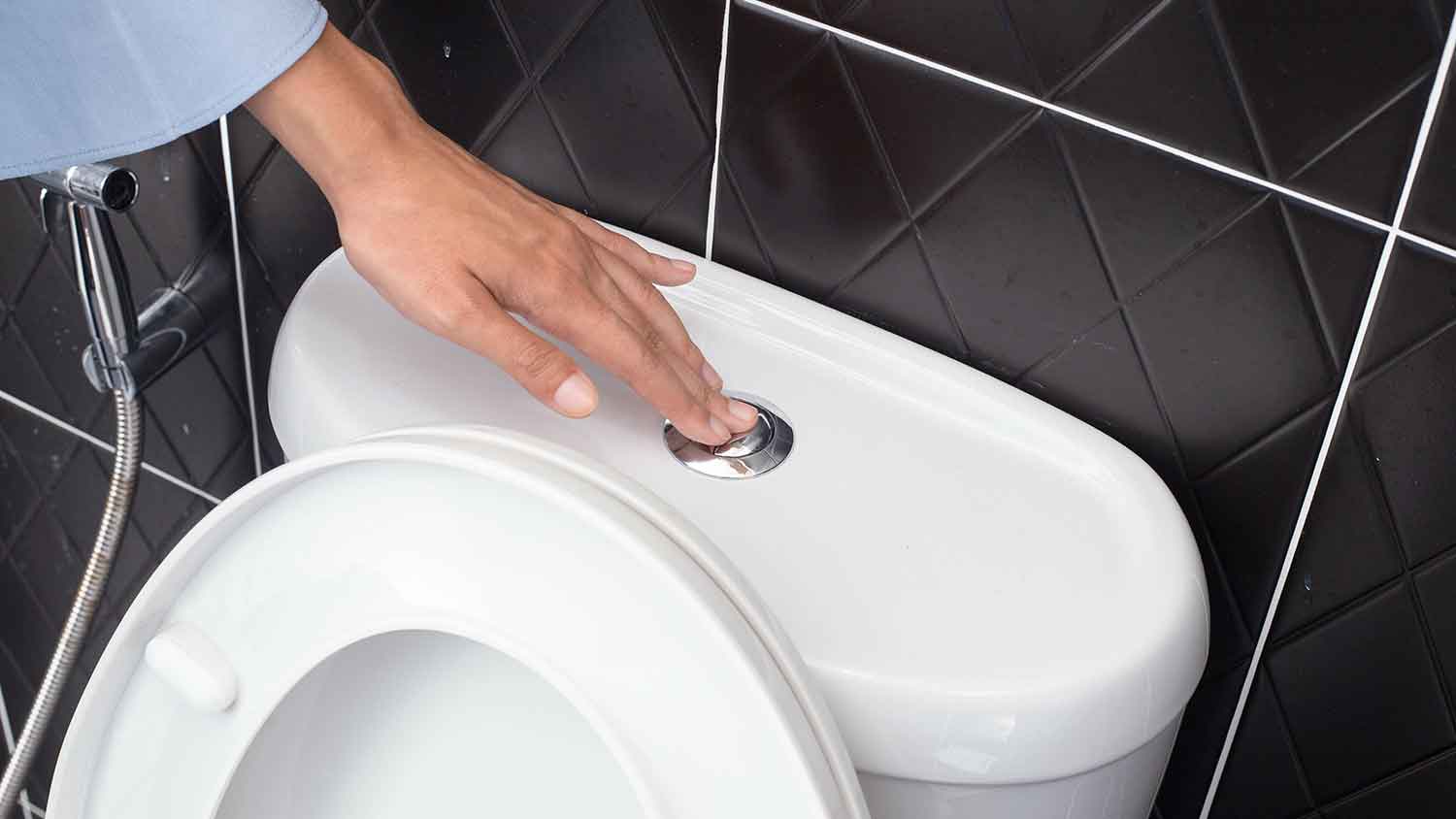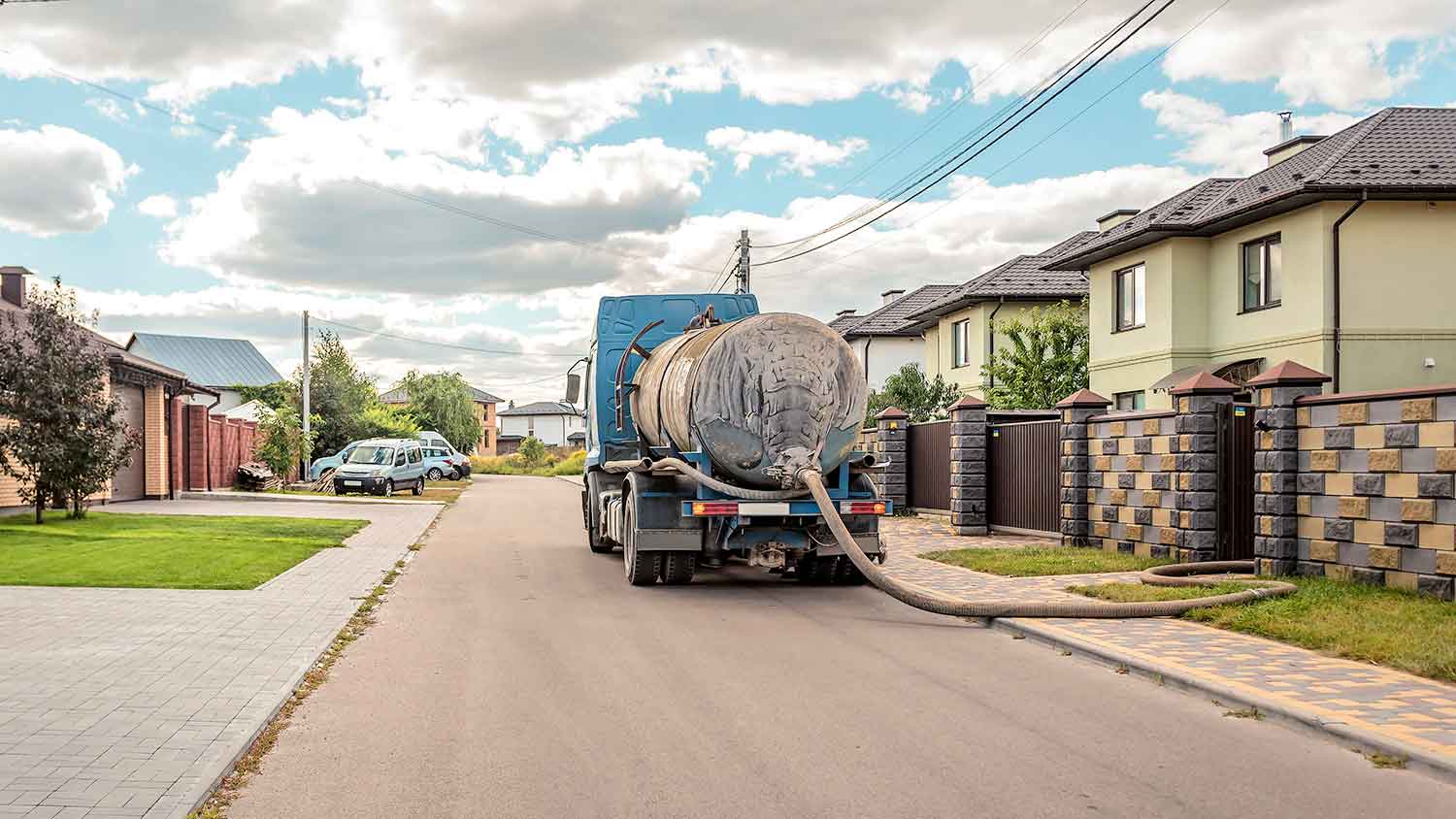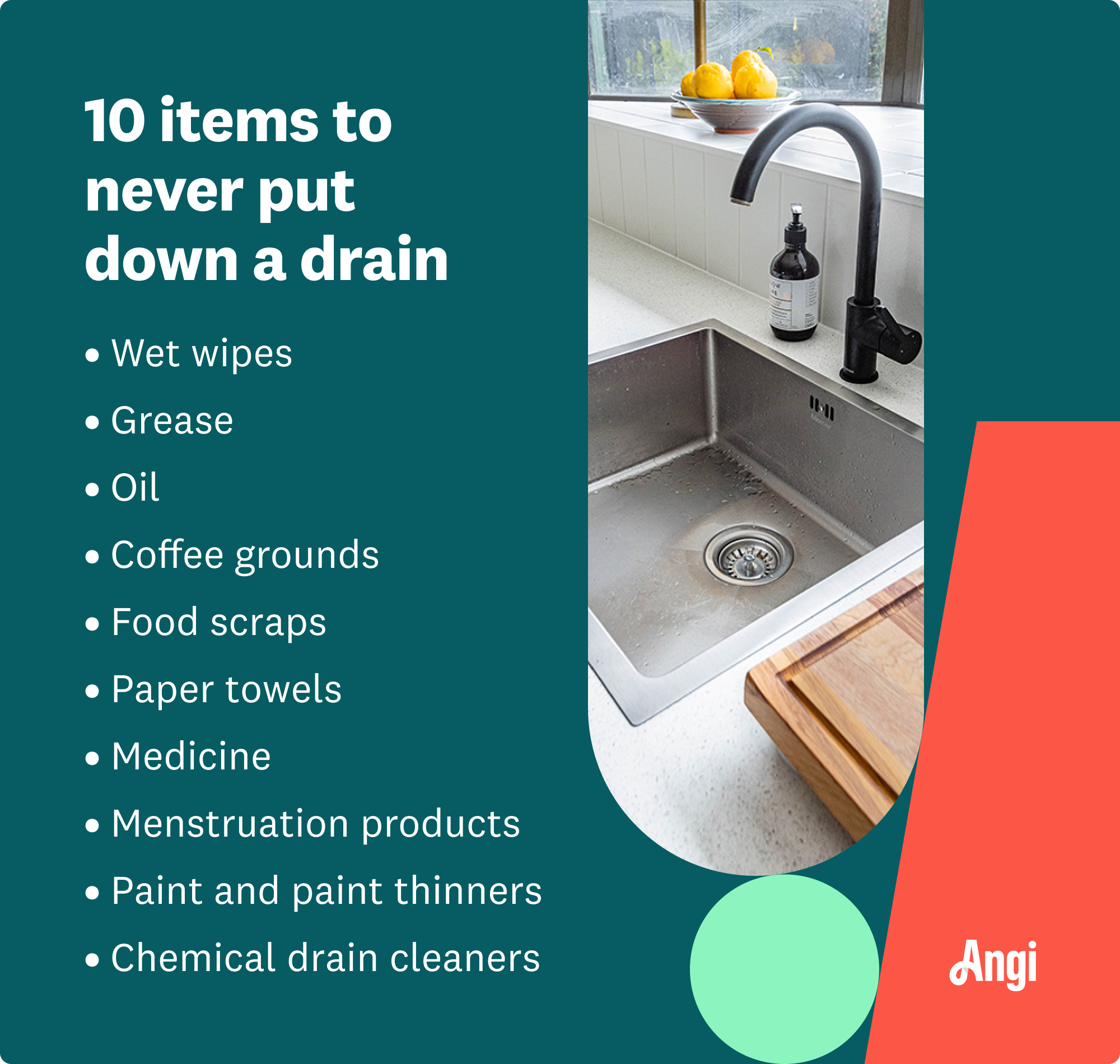
The average cost to connect to a public sewer line in Columbus, OH, depends on the linear footage, piping material, local regulations, and more.
Get the dirt on repairing this muddy mess


Because a saturated leach field indicates a problem with the septic system, it poses health risks and can cause damage to your home and property.
Many local regulations require a professional to clean septic tanks, meaning most homeowners cannot legally do this work themselves.
Septic tank repairs cost $600 to $3,000 or more, depending on the problem, but it’s worth the cost considering the health and safety risks.
Hiring a septic tank repair professional for an inspection may reveal a simple, inexpensive fix that you, as a homeowner, wouldn’t recognize.
If your enjoyable time in the backyard has been impacted by some stinky odors from the leach field, you may be dealing with a saturated leach field. While you may not think much of it at first, a saturated leach field can lead to many problems in your home, yard, and even the local ecosystem if the water runs off into nearby creeks or streams. Learn how to fix a saturated leach field and when you should call a pro to come in and make necessary repairs.
A saturated leach field indicates some type of problem with your septic system. Often, this is excessive wastewater produced by the household. If you don’t have the right size septic tank for the amount of wastewater your home generates, it can overload the leach field, where partially treated wastewater from a septic tank goes for final treatment before it returns to the groundwater.
This can cause the extra wastewater to pool in the leach field, damaging your lawn. Or, the wastewater can back up into your home’s drains. Additionally, the pooling water over the leach field can run off into local waterways, where it can contaminate the water. Aside from the potentially costly damages to your plumbing and yard, the wastewater also poses health risks, like waterborne illnesses, for your family.
If you suspect problems with the leach field, you may want to first schedule an inspection to identify the cause. A septic system inspection costs $200 to $900. If you can’t fix the leach field through additives or septic tank pumping, expect to spend an average of $5,000 to $12,000 for the cost to install a new drain field.

There are several signs to watch for that may reveal a saturated leach field or other major septic system problems, from stinky smells in your drains to pools of water over the leach field. Some signs of a saturated leach field include:
Pooling water over the leach field
Foul odors, similar to rotten eggs, in your home’s drains or in your yard
Spongy soil over the leach field
Grass that’s greener or lusher than normal over the leach field
Slow drains in the home
Toilets that struggle to flush
Water backing up into your home’s drains
A leach field lasts 15 to 30 years, so if you have one that’s over 15 years old and having issues, you may need to replace it.
There are many ways to fix a saturated leach field. For homeowners, the easiest option to start with is to use store-bought additives to help reduce bacterial imbalances in the leach field. However, most leach field issues will need professional attention because stagnant wastewater—which may contain bacteria like E.coli, parasites, and viruses, according to the Centers for Disease Control and Prevention—can quickly become a health hazard to your family and the local ecosystem.
Whether DIY or with some help from a trained professional, here are a few ways to fix a saturated leach field.
A highly effective way to fix a saturated leach field without a pro’s help is to add specialized bacteria and enzymes to your septic system. These biologic additives reduce the biomat layer and restore a balance of anaerobic and aerobic bacteria in the soil of the leach field. This process will help restore the flow of water through your leach field.
The biomat is a jelly-like substance in the soil around the leach field where the effluent from the septic tank is released for further treatment. The anaerobic bacteria consume the biomat, which turns it into water and carbon dioxide.
The aerobic bacteria in the soil also help maintain the biomat layer at an acceptable thickness. If it’s too thick, the biomat can clog the leach lines and cause oversaturation. You can find enzyme additives for septic tanks and leach fields at a home improvement store near you or online to help reduce the biomat to a healthy level.
Following the product’s instructions on the label, pour the enzymes into a toilet, the distribution box of your septic system, or the inspection port of your septic tank. The label will tell you exactly how to apply the additives.
Again, consult the label of the product you’re using to determine how long to wait for the additives to start working. Products may take a few days up to a few weeks before you start to notice any changes to the leach field.
You may want to repeat this process again after several weeks to continue fixing the saturated drain field. However, don’t let a saturated drain field sit for too long as you wait for the additives to work. A saturated drain field could be a sign of a more serious issue, and it’s better to schedule an inspection than wait months for the added bacteria and enzymes to make any progress.

A saturated leach field can be a sign that the septic tank is full, which is easy to fix with the help of a local septic tank cleaner. Many cities, counties, and even states require a licensed pro or company to pump septic tanks and properly remove the waste, so you shouldn’t try to pump the tank yourself. Be sure to schedule septic tank cleaning services every three to five years.
If restoring the biomat and pumping the septic tank still don’t fix the saturated leach field, it could be because your septic tank doesn’t have the capacity to handle the amount of wastewater coming from your home.
Installing a bigger septic tank is not something homeowners can DIY. In most places, only a certified or licensed professional can handle septic system installations and replacements. Consult with a local septic tank company to determine the right septic tank size to meet your needs, secure appropriate permits, and move forward with this project.

Preventing a saturated leach field requires regular inspections and maintenance to catch potential problems, like clogs or excess wastewater generation, early. Some ways to prevent a saturated leach field include:
Only flush toilet paper.
Minimize the amount of oils, fats, and grease going down drains.
Don’t put items in a septic system that can lead to clogs, such as wet wipes or menstrual products.
Avoid driving vehicles or other heavy machinery over the drain field.
Don’t place any structures, like sheds, over the leach field.
Schedule a septic tank pumping service every three to five years.
Schedule annual septic system inspections.
"Use household chemicals sparingly around your drains. While a small amount of bleach won't harm a large system, dumping excessive amounts can disrupt the microbial balance that's crucial for breaking down wastes. Antibacterial soaps and heavy cleaners further risk the health of the system."
— Asif Bux | Service Manager, Comfort Union
Using additives to try to thin out the biomat layer of the leach field costs $15 to $75 if you want to DIY fix a saturated drain field. Keep in mind, though, that this may just be a temporary solution, especially if you’re generating too much wastewater for your septic system to handle. Septic system repairs need to be handled by a septic system company. Septic system repairs cost $630 to $3,000 on average.
From average costs to expert advice, get all the answers you need to get your job done.

The average cost to connect to a public sewer line in Columbus, OH, depends on the linear footage, piping material, local regulations, and more.

The average cost to connect to a public sewer line can vary depending on the linear foot, piping material, local regulations, and more.

Sewer cleanout costs depend on the type of cleanout and how long the line will be. Click here to start planning your budget for this project.

A clogged septic tank can wreak havoc on your home and property. Learn how to unclog a septic tank yourself and know when to call in the pros.

Wondering if an anaerobic septic system is the right choice for your home? Check out this guide to learn more about how this type of system works.

Follow this guide to learn how to get rid of a cesspool to save some money and transform your home into a more eco-friendly space.